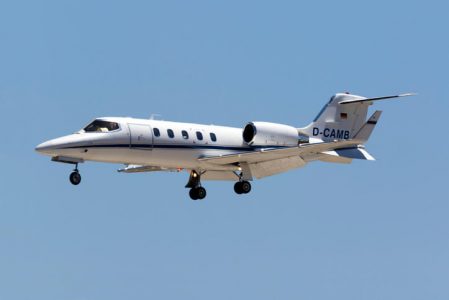Circle-to-Land has its Benefits When Performed Correctly
Circle-to-land approaches at any airport are a challenge that most airlines prohibit. Overshooting the runway during a circling maneuver is a common issue as pilots struggle to accurately calculate the appropriate descent rate and bank angles necessary to align the aircraft with the landing strip. This can result in overcompensation with higher-than-normal risk angles that can cause accidents. Reduced visibility and wet runways only add to the danger level. Skilled pilots are crucial in these dangerous situations, where the circle-to-land approach is not a routine one.
The Learjet accident in Teterboro in 2017 is a classic example of the circle-to-land gone bad. The flight was assigned the ILS to runway 6 with a circle to 1. The pilot waited far too long to begin the circle and then had to overcompensate to get re-aligned with the runway. In the process, he found himself in an accelerated stall with no time or altitude to recover. The aircraft crashed and all onboard were killed.
Sometimes the circling approach doesn’t cause an accident, but it sure does upset the airport neighbors who are concerned with noise. It’s common for pilots to not begin the descent when they should and as a result, they end up high on the glide path, necessitating max braking and maximum reverse thrust. When the circling approach is the approach in use on a given day, I can see how the continuous racket of maximum reverse would annoy the nearby residents.
Why We Use Circle-to-Land
While it is not the preferred landing procedure, the decision to use circle-to-land is influenced by several factors:
- Weather conditions can significantly affect a pilot’s decision, as low clouds or fog can limit visibility and make landing challenging.
- Altitude is another factor, as some airports are located at higher elevations, making it difficult for aircraft to maintain a stable approach.
- Visibility is also a consideration, as pilots need to be able to see the runway in order to land safely.
Some of the benefits of using circle-to-land include the ability to land under challenging conditions and the opportunity for pilots to practice their skills and improve their situational awareness. However, there are also challenges associated with this approach. Pilots must be skilled at maneuvering their aircraft in tight spaces and maintaining a stable approach in windy conditions.
Providing Help for Circle-to-Land
Honeywell is trying to eradicate circle-to-land issues. They have come up with the first guided visual approach for crews who are trained and equipped to fly RNP-AR (required navigation performance-authorization required) approaches.
The first guided visual approach was created specifically for Teterboro’s runway 1, to be used when ATC gives the pilot the ILS 6, circle to 1 approach. The approach is designed to be used with the autopilot on and initially guides the plane on the straight-in (with vertical guidance) to runway 6 and then it gently begins a turn towards MetLife stadium. From there, the plane will line up with runway 1 while descending with a 3.5 degree vertical path so that the roll-out is perfectly aligned with runway 1 VASI.
Conclusion
Circle-to-land is a procedure that pilots may choose to use when a straight-in approach is not possible due to weather, altitude, or visibility factors. While there are benefits to using this approach, such as the ability to land under challenging conditions and the opportunity to practice skills, there are also challenges, including increased risk of collision and difficulty maneuvering in tight spaces. As always, pilots must weigh the risks and benefits when deciding whether to use circle-to-land, and ensure they have the necessary skills and experience to execute the maneuver safely.
RELATED CTS TRAINING










